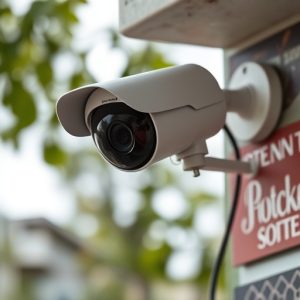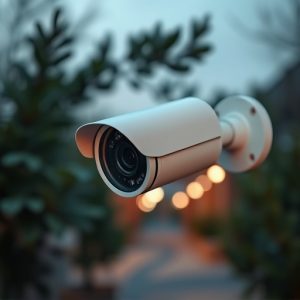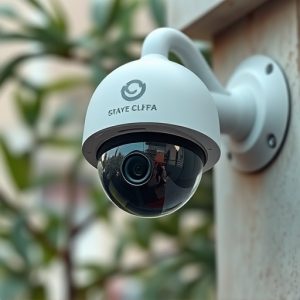Optimize Fake Security Camera Placement with Infrared Sensors
Understanding Fake Camera Infrared Sensor LED technology is crucial for enhancing home or business s…….
Understanding Fake Camera Infrared Sensor LED technology is crucial for enhancing home or business security. These LEDs mimic functional infrared sensors, providing a visual deterrent to intruders by strategically placing fake cameras in visible areas. For indoor security, place them discreetly yet visibly at entryways and corridors. Outdoors, position them at eye level or slightly elevated, well-lit, and hidden behind natural features for maximum effectiveness. While they deter petty crimes and are cost-effective, their low-light imaging capabilities and detectability should be considered when choosing the best fake security camera locations.
“Discover the power of deception with fake camera infrared sensor LEDs, a game-changer in home security. This comprehensive guide explores the technology behind these innovative devices, offering insights into their functionality and advantages. We’ll navigate the best indoor and outdoor placement strategies for maximum deterrent effect, highlighting the benefits and limitations to ensure you make an informed decision. Uncover the art of enhancing your security with fake cameras, strategically positioned to deter potential intruders, while understanding their unique capabilities.”
- Understanding Fake Camera Infrared Sensor LED Technology
- Best Locations to Install Fake Security Cameras Indoors
- Outdoor Fake Security Camera Placement for Maximum Deterrent Effect
- Uncovering the Benefits and Limitations of Fake Security Cameras with Infrared Sensors
Understanding Fake Camera Infrared Sensor LED Technology
Understanding Fake Camera Infrared Sensor LED technology is crucial when considering the best fake security camera locations for enhancing home or business security. These LEDs are designed to mimic the appearance of functional infrared sensors in real security cameras, providing a visual deterrent to potential intruders. By strategically placing these fake cameras in visible areas, you can create the illusion of enhanced surveillance, deterring crime and giving the impression of a well-protected space.
The technology behind these LED mimics involves precise lighting effects that replicate the heat signature often detected by infrared sensors. When integrated into fake camera designs, they cast a subtle glow that appears natural, yet serves as a powerful psychological tool against would-be thieves or vandals. Whether it’s in the form of indoor security or outdoor surveillance, positioning these fake cameras at entrances, windows, and other vulnerable points can significantly contribute to a safer environment.
Best Locations to Install Fake Security Cameras Indoors
When considering the best locations to install fake security cameras indoors, strategic placement is key. Discreet yet visible areas like entryways and corridors are ideal as they serve as the first line of defense for any potential intruders. These high-traffic zones offer a clear view of visitors while remaining relatively hidden from regular daily activities. Avoid placing the fakes in obvious places like directly above doors or windows, as genuine cameras in these locations would be more effective deterrents. Instead, opt for less predictable angles and positions to create an authentic feeling of surveillance throughout your home or business.
Outdoor Fake Security Camera Placement for Maximum Deterrent Effect
When choosing the best fake security camera locations for maximum deterrent effect, outdoor placement is key. Strategically positioning a realistic-looking fake camera in visible areas can significantly reduce crime and create the perception of enhanced security. Consider highly accessible zones like entry points, open spaces, and parking lots where potential intruders might approach or traverse.
For added effectiveness, place the fake camera at eye level or slightly elevated to mimic real surveillance equipment. Ensure it’s well-lit to avoid shadows that could obscure its view. Natural features like trees or nearby buildings can provide cover for the device while still allowing a clear line of sight, making it an excellent deterrent against unwanted activity.
Uncovering the Benefits and Limitations of Fake Security Cameras with Infrared Sensors
Uncovering the benefits and limitations of fake security cameras with infrared sensors is essential, especially when considering their strategic placement for optimal security. These devices, designed to mimic real surveillance equipment, offer a range of advantages. For instance, they can deter potential intruders as their presence suggests an active security system, even if the actual footage isn’t recorded. This is particularly beneficial in deterring petty crimes and vandalism. Moreover, fake cameras can serve as a cost-effective solution for homeowners on a budget who still want to enhance their property’s security perception.
However, it’s crucial to acknowledge the limitations. While they effectively act as visual deterrents, these infrared sensors often lack the capability to capture clear images or videos, especially in low-light conditions. Unlike real cameras, their sensors may not provide detailed evidence. Additionally, some models might be easily detectable due to their distinct appearance, defeating their purpose if placed in obvious best fake security camera locations. Despite these drawbacks, they can still serve as valuable tools for creating the illusion of enhanced security.
Fake security cameras equipped with infrared (IR) sensor LEDs offer a cost-effective way to enhance home or business security. By strategically placing these devices, you can create an effective deterrent against potential intruders, as they mimic real surveillance equipment. The best indoor locations include high-traffic areas and entry points like doors and windows. For outdoors, positioning them at angles visible from approaches and near lighting sources maximizes their impact. While IR sensors provide night vision capabilities, limited range and line-of-sight requirements should be considered to ensure optimal performance.


